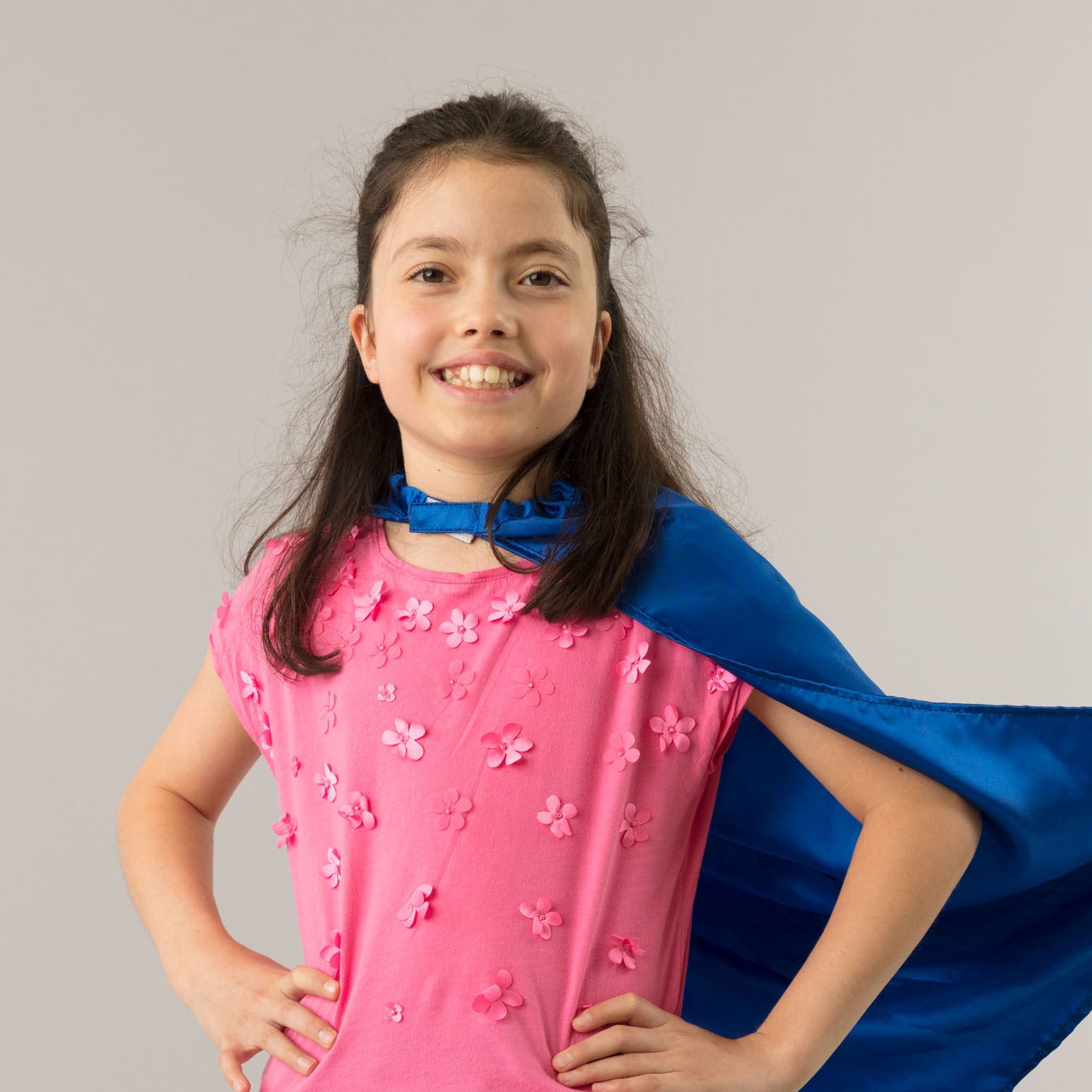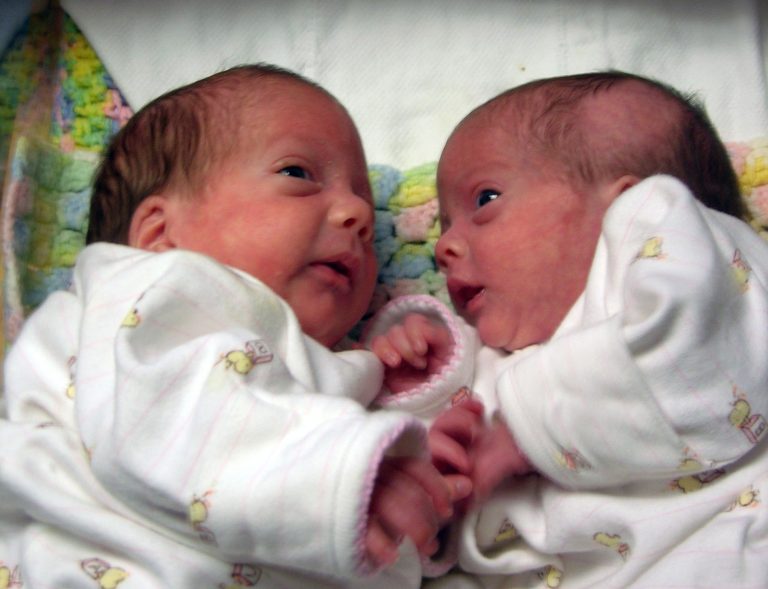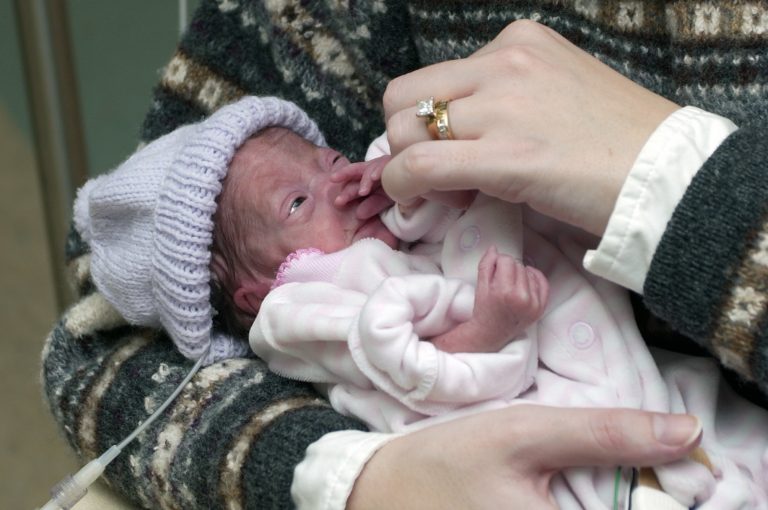
Flash
KNOWN IN REAL LIFE AS:
SOPHIA BEVILACQUA
SUPERPOWER:
X-RAY VISION, INVISIBILITY & FLYING
DIAGNOSIS:
CEREBRAL PALSY

Meet Flash (Sophia Bevilacqua) at the Akron Marathon
on September 23.
Meet Flash
Sophia Bevilacqua, Age 10, from Lakemore, Ohio
Sidekicks: Her dog, Brandi, who’s a Boxer-Brindle mix.
When she’s not busy overcoming obstacles: She dances on the Cavs No Limit dance team, swims, cheers and rides horses.
Did you know fact: She has a twin sister, Bella, who’s also a Hero patient.
Why Sophia is a #ACHero: While born premature, there’s nothing premature about Sophia’s desire to live life to the fullest despite the challenges cerebral palsy may cause. From multiple, complex surgeries to hours of physical and occupational therapy – Sophia stays positive with support from her family and friends, and by participating in activities she loves.
Sophia’s Story: Most people don’t get their first haircut until they’re old enough to sit still in a chair, but for Sophia Bevilacqua, hers came at just 26 weeks old, shortly after entering Akron Children’s neonatal intensive care unit (NICU) with her twin sister.

Sophia spent 3 months in the NICU where she had an IV (intravenous) inserted into her tiny scalp to keep it secure and to deliver the fluids she needed to develop. She underwent a patent ductus arteriosus (PDA) ligation, a delicate procedure that closes off the open PDA in the heart to prevent a surplus of blood from entering the lungs.
“The first time I got to see my girls, the staff prepared me for what I would see…but, when I saw them, the danger of it all became so apparent,” said mom, Kirsten Bevilacqua. “Everyone was amazing in the NICU…and the girls did so great.”

But, just before discharge, doctors noticed Sophia’s ovaries were herniated so she had to stay back for an operation. A few days later, Sophia came home on a heart-lung monitor and had regular visits with the Akron Children’s Neurodevelopmental Science Center.
Soon after, her parents noticed Sophia wasn’t rolling, crawling or pulling up at the same pace as her sister so they took Sophia to Children’s for testing. It was then that Sophia’s lack in development was given a name – cerebral palsy.
Cerebral palsy is a disorder of movement, muscle tone or posture that’s caused by damage that occurs to a developing brain and can cause a combination of abnormal reflexes, floppiness or rigidity of the limbs and trunk.
At age 4, Sophia had her first muscle lengthening and heal cord surgery to help with her condition. At age 5, Sophia began receiving onabotulinumtoxinA (Botox) injections in both legs every 3 months to keep her spasticity under control. Sophia’s main physician, Dr. Kathryn Mosher, pediatric physiatrist and director of the Neuromuscular Clinic, knew more could be done for Sophia’s cerebral palsy, but it required tough decisions and a long recovery.
Since Akron Children’s Spasticity Clinic wasn’t in place at the time, Dr. Mosher recommended Sophia go to an out-of-state spasticity clinic for new treatments to help with the muscle tone in her legs and the nerves that were constantly signaling the muscles to stiffen up. She was a candidate for Selective Dorsal Rehiztomy which could get rid of all her spasticity.
The tedious surgery separates the nerves in the spinal column and then certain sensory nerve fibers, or rootlets, in the spinal cord are cut out. Sophia had the maximum rootlets removed for each leg to get rid of spasticity and still maintain her ability to walk. The 6-week recovery forced her to relearn how to crawl, kneel, stand and walk.
When Sophia came home, she began intense physical therapy at Akron Children’s day rehab to help with flexibility, balance and motor development. She also attended occupational and speech therapy to help her with daily activities at home and school. Sophia continues with weekly therapy sessions today.
Througout all of her recovery and therapy, Sophia has undergone several orthopedic surgeries, including hip socket adjustment, a graph on her left foot and arches created in both feet to further support her condition.
“Sophia is recovering faster than her doctor’s expectations, which is a true testament to the therapy team at Children’s,” said Kirsten. “Sophia loves the people she works with because they’re fun and give her positive reinforcement …Every time we come to Children’s it amazes me at what the hospital does for our children.”
PROUDLY SPONSORED BY:

Make a donation in honor of Sophia


